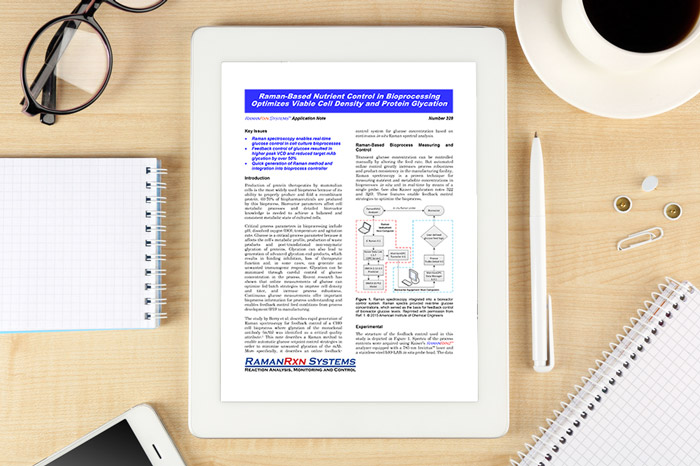Applications note: Raman-based nutrient control in bioprocessing optimizes viable cell density and protein glycation
Posted: 1 December 2016 | Kaiser Optical Systems | No comments yet
In this application note, Kaiser Optical Systems, Inc. discuss raman-based nutrient control in bioprocessing…
Key Issues
- Raman spectroscopy enables real-time glucose control in cell culture bioprocesses
- Feedback control of glucose resulted in higher peak VCD and reduced target mAb glycation by over 50%
- Quick generation of Raman method and integration into bioprocess controller
Introduction
Production of protein therapeutics by mammalian cells is the most widely used bioprocess because of its ability to properly produce and fold a recombinant protein. 60-70% of biopharmaceuticals are produced by this bioprocess. Bioreactor parameters affect cell metabolic processes and detailed bioreactor knowledge is needed to achieve a balanced and consistent metabolic state of cultured cells.
Critical process parameters in bioprocessing include pH, dissolved oxygen (DO), temperature and agitation rate. Glucose is a critical process parameter because it affects the cell’s metabolic profile, production of waste products and post-translational non-enzymatic glycation of proteins. Glycation can also lead to generation of advanced glycation end products, which results in binding inhibition, loss of therapeutic function and, in some cases, can generate an unwanted immunogenic response. Glycation can be minimized through careful control of glucose concentration in the process. Recent research has shown that online measurements of glucose can optimize fed-batch strategies to improve cell density and titer, and increase process robustness. Continuous glucose measurements offer important bioprocess information for process understanding and enables feedback control feed conditions from process development (PD) to manufacturing.
This application note is restricted - login or subscribe free to access


Why subscribe? Join our growing community of thousands of industry professionals and gain access to:
- bi-monthly issues in print and/or digital format
- case studies, whitepapers, webinars and industry-leading content
- breaking news and features
- our extensive online archive of thousands of articles and years of past issues
- ...And it's all free!
Click here to Subscribe today Login here
Related content from this organisation
- Expert View: Beyond API monitoring: in‑line Raman spectroscopy for bioprocess monitoring and control
- Application Note: Representative sampling of solids and turbid media in process raman spectroscopy
- Scientific Poster & Whitepaper Gallery 2018
- Scientific Poster: Raman spectroscopy technologies enabling scalable process control in bioprocessing
- Kaiser Optical Systems, Inc. receives 2017 Aspen Award for the advancement of upstream bioprocessing










